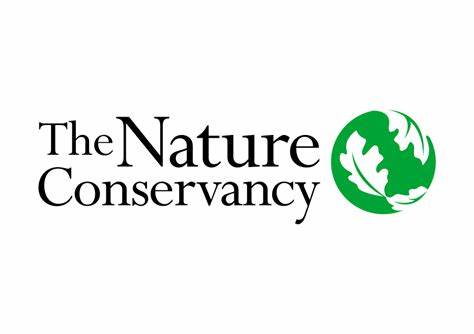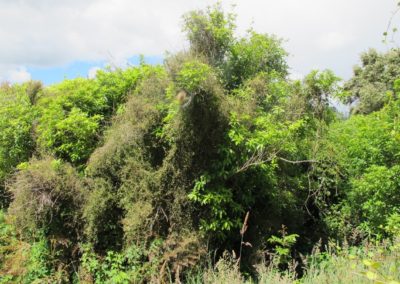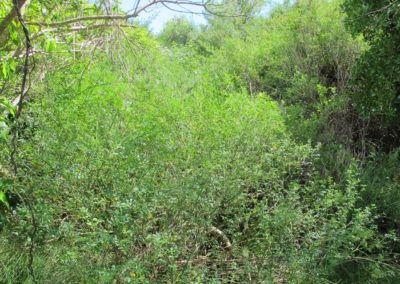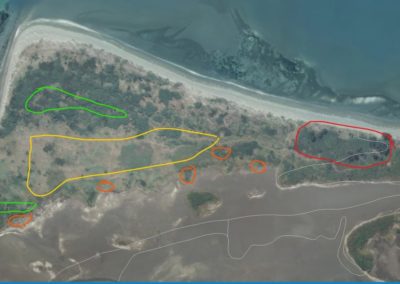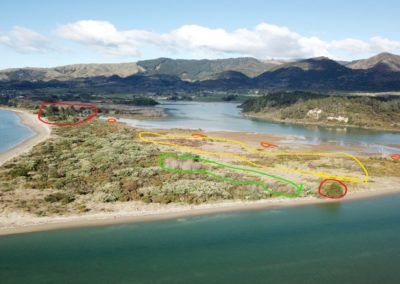
Motupipi Sandspit Project
Project Overview
The Motupipi Spit is a prime example of “Dune Landscape”. Sand dunes are arguably one of the most threatened environments. Most dunes have been domesticated by urbanisation, so the Motupipi Spit deserves the best care. It is an important nesting site for the Banded Dotterel and other coastal birds. Between 2003 and 2011, TDC and DoC worked with Community Groups and corporate sponsorship to carry out many planting projects to restore this Dune Landscape. The restoration of Indigenous Foredune plants and removal of exotic species here was the largest proved example in Golden Bay and was been presented at National Dune Conferences. Data has been gathered to use as part of restoration trials. Thousands of foredune, rear dune and coastal forest species were planted. All of which have done well, except the ones that were burnt in a probable firework fire through the middle of the dune in 2011 but even some of those recovered and were followed up by replanting.
Sadly, almost all the work stopped in 2011 when the Corporate sponsors moved their attention to the bigger project of Farewell Spit. The TDC funding of “CoastCare” has also dried up for the Spit.
The Motupipi Spit is gradually being infested by exotic trees and pest plants that are part of our pest species list we wish to control. The infestation level is controllable, but reaching the stage of rapid increase soon. See our assessment report. The majority of the spit, central and eastern end is Unallocated Crown Land (UCL) and any management was up to the financial priority lists of government (DoC). The small area at the eastern end is part of the Golf Course block and administered by TDC. This area has a bigger range of pest plants and is regenerating steadily, so help to encourage wanted species is crucial.
Both agencies are already fully stretched.
Project De-Vine Environmental Trust and DOC staff (see letter) can see that a clean-up of the pest trees and plants will invigorate the native plants to continue establishing themselves.
DoC is keen to support in kind and is checking out if they can supply a spray vehicle to get into the middle of the Spit area, where there is an overgrown track. The DOC opinion is that further planting is quite likely to be unnecessary as the Muehlenbeckia australis and complexa will expand their existing cover of the shrubs and grasses, creating a great habitat for Skinks and others. The immediate neighbours are the Takaka Golf Club, who lease the land from TDC. They are supportive and we have asked them to remove the one sycamore that they have only 200m from the start of the Spit area.
We are asking for funding to control the exotic trees (Wilding pines, Sycamores and others) and pest plants – Pampas grass and in particular Yellow jasmine, which is a very invasive plant only found in Golden Bay, apart from a few reported small sites in NZ, since it was introduced about 70 to 90 years ago by a well-meaning collector of exotic plants.
The initial control work will then be followed up by reducing amounts of work over several years to achieve a sustainable Dune landscape. No longer will it be a source of pest seeds, but a habitat for skinks and birds and a source of native tree seeds to enhance all the other work happening in the Motupipi River
Initial Assessment
Date of Assessment: 14/8/18
Assessor Name: Mark Brignole
Landowner(s): TDC and UCL land
Motupipi Sandspit, Attached to the Pohara Golf Course. (access through course)
Assessment:
The Motupipi Sand Spit is 14 hectares of UCL and Council owned land at the mouth of the Motupipi River estuary. There has been quite a bit of effort put into cleaning up and replanting the area but it is a very large site and access is limited. It’s only access is through the golf course and down the beach. DoC vehicles are the best choice for vehicle access of the area. The major weeds are Wilding tree species (mostly Pinus radiata and Sycamore). Italian Jasmine has established a major foothold and is present in most places on the Spit. Purple and White Pampas is visible mostly on the inner side of the peninsula (it would be relatively easy to eradicate).
Weeds Recorded:
| Name | Infestation Score | Comments (Locations) | Hours Required for first sweep. |
| Banana passion vine in the area of the Wilding pines (circled in RED) | 1 | Neck of Spit | |
| Old Man’s Beard | Not Seen | ||
| Wilding Pine (Red) / Sycamore (Green | Large Pines are found clustered around the neck of the spit. Large and smaller trees of these species are scattered around the spit. | ||
| Pampas Grass (orange) | Primarly Found along the inner edge of the Spit. | ||
| Italian Jasmine (yellow) | Scattered throughout but densest in the grassy open areas. |
Project Timeline
| Phase | Description of Work | Start and End Date |
| Phase 1.0 | Meet with DOC staff to understand the problem and options to stop the infestation of the spit by pest plants and trees and ask for letter of support | April to Nov 2018 |
| Phase 1.1 | Contact Takaka Golf Club for access and general support of the project. Received | April to Nov 2018 |
| Phase 1.2 | Contact TDC for access over their land and general support of the project. Started contact | April to Nov 2018 |
| Phase 1.3 | Assess Motupipi Spit for key pest plants and trees and work out a strategy for control | Aug to Nov 2018 |
| Phase 1.4 | Applied to Fonterra Grass Roots fund – oversubscribed – failed | Sept 2018 |
| Phase 1.5 | A Tasman Environmental Trust application was successful with a Lotteries grant for control of LINZ UCL and TDC land on the Sandspit as well as other jobs along the Motupipi River. | Nov 2019 |
| Phase 2.1 | Carry out first year large exotic tree control work | Mar to May 2020 |
| Phase 2.2 | Carry out second year large exotic tree control work | Sept 2020 to May 2021 |
| Phase 2.2 | Carry out the control work on the bulk of the Yellow jasmine plants | Dec 2020 to June 2021 |
| Phase 2.4 | Send out report to funder and stakeholders | June 2021 |
| Phase 3 | PDVET applied for a grant from Tasman Network Trust to continue to remove key pest plants and trees in the next season. Recieved $3000. | Aug 2020 |
| Phase 4 | Repeat Control and reassess at the end. | September 2020 to August 2021 |
Methodology Overview
The pest plant and tree control will be decided using site and species criteria. Those listed here are already being targeted in the lower Takaka valley in the above-mentioned pest plant and tree programmes already or are a threat to the area due to be hardly found nearby – Sycamore
- Site criteria: Primarily proximity to the ongoing Motupipi River restoration programme and likely to be a seed source to the many existing and planned riparian plantings.
- Species criteria: In this case all the targeted species are effective seed spreaders.
Project De-Vine Capabilities utilised for this project.
Invasive Weed Control
Our proven methodologies and years of experience allow us to handle invasive weed control regardless of the scale.
Wilding Pine Control
Our highly capable teams are dedicated to stopping the spread of wilding pines, employing strategic aerial imagery and effective on the ground methods to control and eradicate this invasive species.
Get In Touch
Have a project you’d like to partner on?


